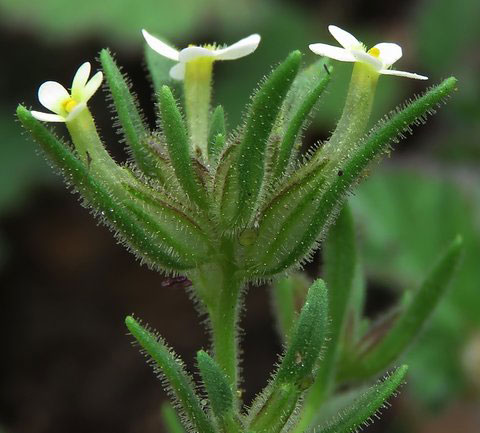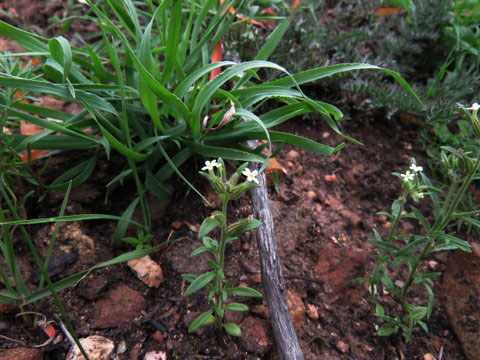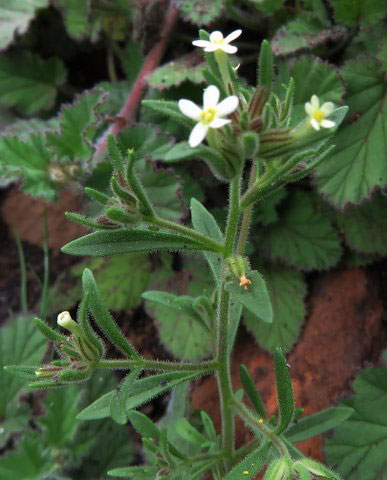Cape granite flax was considered extinct, and the only evidence of its existence was scans of herbarium sheets dating back to the 1830s. Gigi Laidler was told to go and find one. In the wild. No pressure, then.

Gigi Laidler, a staff member at CREW, has this to say about the project, “One of the first things I learnt when I joined the CREW team is that ‘special’ doesn’t always mean big or showy when it comes to threatened species. There is much reward to be found in the small and seemingly uninteresting plants.
On my very first outing with the team, I was instructed to seek and find Granite Cape Flax Polycarena silenoides – a tall order for a small plant found only on Lion’s Head granites and presumed to be extinct. The only visual material I had to work with were scans of herbarium sheets dating back to the 1830s and descriptions gleaned from sources like Cape Plants and other Cape Floras. According to the Red List website, the status is Critically Endangered, possibly extinct and “Known from the slopes of Lion’s Head – three collections were made before 1940. We suspect this species may be extinct due to alien grass invasions and incorrect fire management.”
Of course, we didn’t find our plant on our first search in October, but undaunted, if I subsequently heard of anyone going anywhere near Signal Hill/Lion’s Head, I beseeched them to look out for a small plant in granitic areas.

Then one Sunday, I set off in search of this elusive target on a mild, overcast morning, with the odd hint of impending bad weather threatening to disrupt our botanising fun. Eventually, we reached our main target area on the lower road on the western side below Lion’s Head, where the granites start. We split the group with those feeling nimble and fleet-of-foot exploring the more bouldery section while the more “cautious” of us would simply scramble our way up the steep slope to the path, where we would rendezvous before returning to our vehicles.

I opted for the more direct scramble up the slope, and I didn’t get very far when an insignificant little weed-like plant about 8 or 9cm high caught my eye. Closer inspection confirmed all the “boxes” for the identifying features appeared to be “ticked”, – so I hazarded a guess that we had finally found our plant and proceeded to take many pictures. I will admit that the prospect of rediscovering a presumed extinct species is exhilarating, so Sunday night was a bit restless for me!

On Monday morning, my find was indeed confirmed as being the long-lost Polycarena silenoides – a little plant that can be easily overlooked and dismissed as being something common. Granite Cape flax, as it is commonly known, was probably obscured by mature vegetation on previous searches, and we are fortunate that after the fire, it is now visible in the burnt area, where there is not too much competition from other larger plants.

This population of Polycarena silenoides will now need to be more fully assessed and monitored so that its Red List status can be revised, and more can be learnt about its life form and responses to fire and other threats.

It is encouraging to know that perseverance pays off, and small can be exciting too. So let’s keep looking for those elusive threatened plants, and who knows how many other long-lost species are waiting to be rediscovered.”
The Cape Floristic Region Custodians of Rare and Endangered Wildflowers (CREW) team is a citizen science programme that uses volunteers passionate about plants, many of which are also members of the Botanical Society of South Africa. CREW data feeds into IUCN Red Listing data with the SANBI Threatened Species Programme and is a way for the general public to make a meaningful contribution to conserving our unique natural heritage. This is plant conservation in action.
To comment on this story: Login (or sign up) to our app here - it's a troll-free safe place 🙂.![]()






